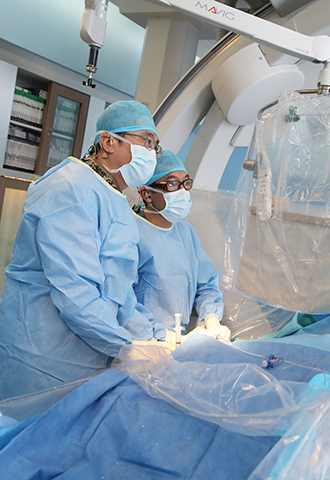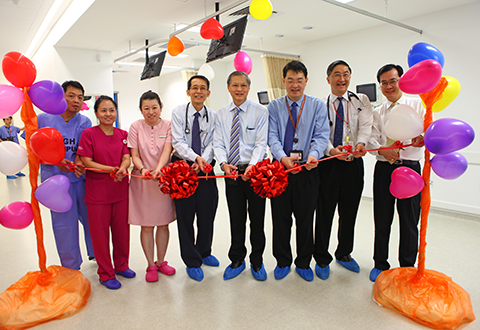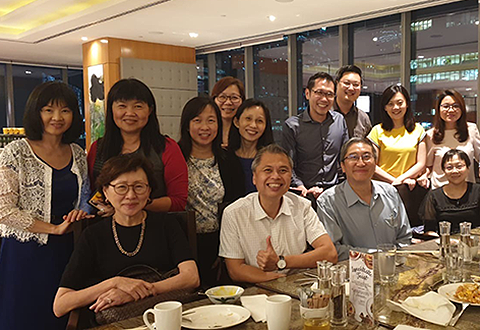The 2019 recipient of the MOH Distinguished Senior Clinician Award, Assoc Prof Lim Soo Teik, says that being able to work alongside fellow healthcare workers to serve our patients is a privilege.
The 2019 recipient of the MOH Distinguished Senior Clinician Award, Assoc Prof Lim Soo Teik, says that being able to work alongside fellow healthcare workers to serve our patients is a privilege.
The national award recognises role models among specialists in the public sector who have made exemplary contributions in clinical practice, education and research. Assoc Prof Lim, Deputy Medical Director and Senior Consultant, was among the nine winners who were honoured with the award at the SingHealth Doctors and Dentists Long Service Award 2020.
In a video interview that was aired at the award ceremony, the change maker who has worked tirelessly to bring about improvements in NHCS’ healthcare IT journeys, shared his personal insights of the transformation in our local healthcare system and tells us more in this issue.
What have we achieved in public healthcare today compared to yesteryears?
Singapore public healthcare has made impressive progress. Public hospitals and polyclinics are well equipped and well run, with the ability to deliver cost-effective treatment. A much wider spectrum of the population now benefit from high-quality public healthcare. While advanced sophisticated treatments are made available in the public hospitals, there is also great emphasis on health promotion and primary prevention of illnesses.
NHCS, as well as other cardiovascular medicine departments in public healthcare institutions have been fortunate to ride on the many great advances in cardiovascular medicine. It is professionally satisfying to work at a place where many of these leading-edge diagnostic and therapeutic modalities are available.
For example, 30 years ago, thrombolytic therapy was the dominant treatment for patients with acute myocardial infarction (AMI, otherwise known as heart attack). This is now managed mainly with emergency percutaneous coronary intervention (PCI) with a higher success rate and a lower risk of bleeding or recurrent ischemic events . This has significantly improved the survival and outcome of patients with AMI. For patients with stable coronary artery disease with severe narrowing, a combination of optimal medical therapy with, where necessary, PCI or coronary artery bypass operation, has provided significant symptomatic relief and survival improvement.

An interventional cardiologist by training, Assoc Prof Lim’s forte lies in percutaneous coronary interventions - non-surgical procedures to clear blocked or narrowed arteries.

Opening of the Cardiac Catheterisation Laboratory at the current NHCS building in 2014.
In the past decade, transcatheter aortic valve implantation/replacement (TAVI/TAVR) has become a novel life-saving alternative for appropriately-selected patients with severe narrowing of aortic valve, who may not be suitable for open heart surgery.
Treatment of heart failure and rhythm abnormalities have similarly, made great strides. Among these include the mechanical circulatory support system, cardiac transplantation, cardiac resynchronization therapy, implantable defibrillator and ablation for various cardiac arrhythmias.
Hence there is overall a very high standard of cardiovascular practice in Singapore public health sector.
How has the landscape changed to nurture our future generation of healthcare professionals?
I am happy to see that there is a more structured and rigorous selection process as well as training programmes for all spectrums of staff – from medical, nursing and allied health, to greater support for our administrative teams involved in the education of our healthcare professionals.
There are also more opportunities for clinical staff to advance in their areas of interest, branching out to specialise in other clinical arenas, conduct meaningful research work or in health care administration. The possibilities are boundless now!
You have played a key role in NHCS’ healthcare information technology (IT) journey, how has it evolved?
I have had the great pleasure and distinct privilege to participate in several healthcare IT journeys.
Parallel to the advances in cardiovascular medicine, there has been great progress in healthcare IT systems. For more than a decade, I worked with many passionate colleagues from NHCS, SingHealth and the IHIS team to improve our healthcare IT systems. Much of these work were ‘backend’ labour, with little glamour but brought significant impact in care delivery.
Three cardiovascular-specific systems deserve special mention here. First is the Cardiology Image and Information Management System (CIIMS) which archives, distributes, and shares images and reports from the cardiac catheterisation lab, echocardiography lab, non-invasive vascular lab, nuclear cardiology lab and cardiac MRI lab. Together with the Radiology PACS system as well as the Laboratory Information System, these platforms have greatly enhanced accessibility of the digital images and reports from our labs, and in the same vein, our care delivery.
The second system is the NHCS in-house Cardiovascular Information System (CVIS). This was initially conceived to bridge the gap of reporting, archiving and distributing the results of several cardiovascular tests not catered for by commercially available systems. Along the way, this platform has also been utilised to develop many other very useful clinical and administrative applications.
Third is the ECG Management System. The second generation of ECG Management System, installed 12 years back, is now dated. A newer, cluster-wide system is currently being installed which will make ECG sharing even more seamless.

Prof Lim credits his IT colleagues whom he has worked closely with, for the marked improvements that have been made to NHCS’ healthcare IT journey, namely Ronnie Tan, former Director, IHIS (front row, second from left); Tan Geok Mui, Senior Manager, IHIS (back row, second from left); and Victor Effendie, Manager Solution Integration & Data Analysis (back row, fifth from right).
Electronic Medical Record (EMR) systems in general have also improved by leaps and bounds. Work process improvements, particularly the electronic clinical documentation (eClinDoc), Computerised Provided Order Entry (CPOE) and Scanned Medical Record (SMR) system, enable a paper-lite environment; electronic prescription system solves the problem of illegible prescription and minimises medication errors; another important milestone, the implementation of Medical Device Interface (MDI) project, enables seamless population of acquired data into the EMR, greatly reducing the need for manual charting. The National Electronic Health Record (NEHR) with its enhanced connectivity to other healthcare institutions, now enables a more comprehensive overview of patient’s medical conditions and treatment.
Even with the extensive enhancements that has been made to our IT systems, there are still many challenges in healthcare IT - system security remains a concern while there is space for improvement in user experience. From the patients’ perspective, they desire for greater human-to-human interaction between themselves and healthcare workers without too much distraction from machines, which remains a delicate balancing act for us in the EMR environment.
In your 30 years of service in public healthcare, what has been the most rewarding?
Having had the opportunity to work with many fellow healthcare colleagues, both senior and junior, to care for patients regardless of their social or financial background, I have found that these gave me immense emotional and spiritual satisfaction.
The multidisciplinary approach to patient management has also been a great learning experience, allowing contribution to the care of patients beyond the ‘traditional’ cardiovascular disease space. Particularly rewarding are the pulmonary hypertension and chronic thromboembolic pulmonary hypertension (CTEPH) services that have brought hope to many patients.
The ever humble veteran clinician emphasises that the privilege is his for being able to work with so many dedicated fellow healthcare colleagues, knowing that each of us is going the extra mile to serve patients with their best interests at heart, “This sense of dedication and selflessness, I believe, will continue to contribute to the high standard of care in our healthcare system.”
